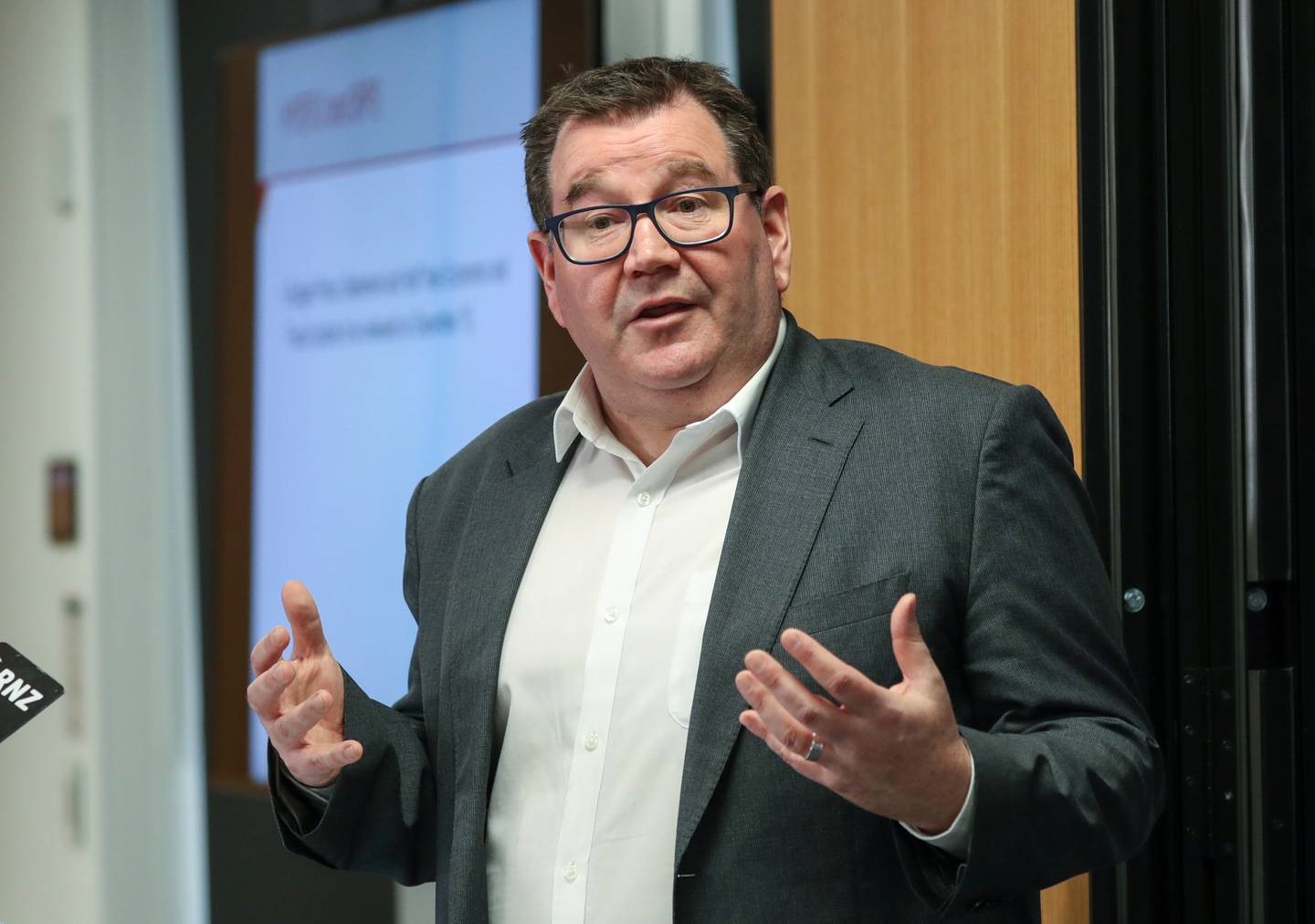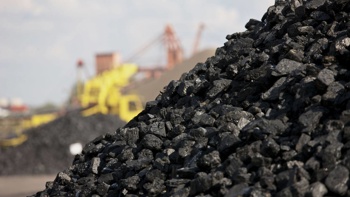New Zealand will move to a new "traffic light" system to manage Covid-19 when District Health Boards have 90 per cent of its eligible population vaccinated.
When each DHB hit this target, the new framework would come into effect. The traffic light system makes use of vaccine certificates.
Businesses will be able to continue to operate at each of the risk levels, and each setting can be used in a highly targeted and localised way, Prime Minister Jacinda Ardern says.
In a suite of announcements that establish a pathway out of restrictions the Government is also providing up to $940 million per fortnight to support businesses through the challenging period, particularly those in Auckland. A new $120m fund has also been established to help lift Māori vaccination rates.
Aucklanders will "absolutely" be able to share Christmas with family, Ardern said.
However, she warned those who aren't vaccinated they won't be able to share in some of the freedoms other Kiwis enjoy.
She said she didn't expect the Auckland border would stay long term, however it is needed now.
"Vaccinations are our armour," Ardern said when announcing the target and new traffic light system.
"They help keep us safe. If you want summer... get vaccinated. If you want a haircut, get vaccinated. If you want to go to a gym or a sports event, get vaccinated. If you're not vaccinated, there will be everyday things that you will miss out on," Ardern said.
The Ministry of Health suggested that Auckland will get to 90 per cent double dose vaccination rate by early December, she said.
As it stands, Auckland DHB as a first dose rate of over 91.6 per cent and a second dose rate of 77.3 per cent.
Counties Manukau has a first dose rate over 86.2 per cent and a second dose rate of over 69.8 per cent.
Waitematā has a first dose rate of 89.5 per cent and a second dose rate over 72.4 per cent.
The Prime Minister hoped today's message to unvaccinated people that soon they won't be able to enjoy the freedoms vaccinated Kiwis will help speed the uptake of vaccination levels.
Hard borders in Auckland will be retained while the virus is not widespread but once the new system is in place and the virus is widespread, Ardern didn't expect regional borders to be put in place for long periods.
How traffic light system will work
Red is for when the virus is spreading in a way that threatens the most vulnerable and could overwhelm the health system.
Education will be open but with public health measures, masks will be needed and there will be caps and physical distancing requirements.
At the red level someone without a vaccine certificate cannot dine at a restaurant, attend a gathering of more than 10 people or go to the gym.
Auckland will move into red when each of its three DHBs hit the 90 per cent target.
"You are so close. Right now you're just 16,000 vaccines away from every DHB hitting 90 per cent for first doses."
The rest of the country will move to orange when every other DHB hits the 90 per cent target.
Orange means no limits if vaccine certificates are used for hospitality, gatherings and events.
Limits will apply if no vaccine certificates are used.
Green will have limits if no vaccine certificates are used for hospitality, gatherings and events.
"It is quite simple, if you are a business that chooses to use vaccine certificates, you will get to operate at every level," Ardern said.
She said broadly the vaccine certificate system was mainly targeted at hospitality and event businesses.
She said these settings will be reviewed on November 29, and the South Island could move into the new system if all those DHBs have already hit the 90 per cent target.
These high levels of protection will limit the impact that the virus can have.
Ardern said the new framework was about being able to live our lives as safely as possible.
The alert level system could still be used if it was needed again, but a new playbook was needed in the context of vaccines - and that's what the traffic light system is.
"I have no doubt we will do what it takes once again, and move forward safely together."
She said the strategy is 'to minimise and protect".
Ardern said New Zealand had carved its own path for much of the past 18 months, and it had been world-leading.
But the vaccine means that there is a pathway forward.
The new traffic light framework will mean everyday freedoms for fully vaccinated Kiwis, rather than a reliance on lockdowns.
Ardern said not all countries have been able to open up with high levels of vaccination.
The goal was to minimise and protect, and to keep the spread of the virus as low as possible.
Public health teams will still try to stamp out outbreaks as much as possible.
She said everyone - especially Aucklanders - deserved to know when more freedoms will be available.
She said a 90 per cent target for the eligible population for each DHB would mean "more equitable outcomes".
Ardern said the new system was based on research published in September.
The government was doing everything it could to remove barriers for those as yet unvaccinated.
"But we also need to give hope to the vaccinated," she said.
She said they are the people who have done what the government asked.
Dealing with Covid is a marathon but at the moment New Zealand is in a sprint to get vaccinated, she said.
Ardern expected that vaccines are likely to be approved for use in children under 12 and that when that happened, nationwide vaccination levels would climb significantly.
Ardern said justified the 90 per cent double dose vaccination targets by saying "we are all literally in this together".
She said if some regions hit their 90 per cent target early, it would free up resources to try and boost vaccination rates in those regions lagging behind.
Ardern said Auckland would likely move into the new traffic light system sooner, partly because of the city's high vaccination rate and partly as a reward for residents' long period spent in lockdown.
Ardern said America's Food and Drug Administration would very soon be considering Pfizer data on whether the vaccine is safe in children under 12. Once that happened it would give a clearer time frame for when Kiwi kids might also be able to be vaccinated.
An end to lockdowns?
A new law set to deal with "all of the issues" around vaccines, including whether businesses can mandate that their employees need to be vaccinated, will be introduced into parliament shortly, Covid Response Minister Chris Hipkins said.
When asked if this new plan meant an end to lockdowns, Ardern suggested it did mean an end to national lockdowns.
Instead she said the government had retained the right to do localised lockdowns.
That could be in places with low vaccination rates, or rural areas, she said.
Business support package

Finance Minister Grant Robertson will also reveal an economic package to help Auckland businesses that will have been in lockdown for at least 11 weeks. (Photo / Mark Mitchell)
Finance Miniter Grant Robertson said he was well aware of the impact of the lockdown in Auckland and Waikato.
The resurgence support payment will be doubled, up to $43,000 - the first applications will open on November 12.
They will be paid fortnightly rather than every three weeks.
He said the decision was made to use this payment because it was flexible and could be implemented quickly.
The wage subsidy was still available using the current criteria.
The cost of both schemes is estimated to be $940m per fortnight.
There will also be a $60m package for the Regional Business Partner Programme and mental health support.
Businesses will be able to apply for up to $3000 worth of advice and planning support, and then receive up to $4,000 to implement that advice through the established Regional Business Partners programme.
As part of the package, $10m is available for mental health and wellbeing support through a programme to be designed with the Employers and Manufacturers' Association and Auckland Business Chamber of Commerce.
Robertson said more support will also be available for low income workers from November 1.
Cabinet will also discuss more support for those most vulnerable.
There would also be a transition grant for Auckland businesses when they move into the new traffic light framework.
It will target the most affected businesses, but Robertson warned that businesses that chose not to use vaccine certificates might not be eligible.
Other support might be available for businesses in the event of local lockdowns.
"Please get vaccinated," Robertson said.
Lifting Māori vaccination rates
The Government has established a $120 million fund to accelerate Māori vaccination rates and support communities to prepare for the implementation of the new Covid-19 Protection Framework.
The new Māori Communities Covid-19 Fund will directly fund Māori, Iwi, community organisations and providers to deliver local vaccination initiatives for whānau, and support Māori and communities to prepare for the new protection framework.

Associate Health Minister Peeni Henare will outline today what the plan is to supercharge Māori vaccination rates. (Photo / Mark Mitchell)
The fund will assist in reaching Māori not yet vaccinated including rangatahi, whānau without permanent housing, whānau in rural and remote locations, and whānau not well connected to health services. Local Iwi, Māori organisations and providers are best placed to reach and support these groups.
$60 million will go towards accelerating Māori vaccination rates and a further $60m will support Māori and iwi-led initiatives to protect their communities against Covid-19.
"While more Māori have been vaccinated in recent weeks, Māori are still lagging behind most New Zealanders, particularly in the younger age groups," Associate Minister for Health (Maori Health) Peeni Henare said.
"We need to pull out all the stops to ensure whānau are protected when the new protection framework is put in place. We know the recent lift in vaccination rates is the direct result of funding Māori providers and of Māori leadership efforts at a regional and national level. We need this to continue.
"From hāngi and vouchers, walk-in clinics and vax buses, partnerships with iwi, local communities and businesses, communities going door-to-door, vaccinations on sports fields and at kura and many more initiatives - we've seen what works and this fund will support more of it," Henare said.
Ardern said setting a 90 per cent vaccination target for each DHB region before they could move to a lower alert level system was the most equitable way to roll out the new system rather than setting a specific Māori vaccination target.
Henare said he had never set a vaccination target for Māori.
He said that if DHBs hit their vaccination targets then that would also bring up Māori vaccination levels.
Cases at triple figures
It follows 102 cases yesterday, the highest daily number in New Zealand so far, as well as 46 people in hospital, the most in this outbreak.
An earlier draft of the traffic light system included different restrictions based on three levels of risk, with red similar to level 2.5, amber similar to level 2, and green similar to level 1.
Red would apply when there is an outbreak, with restrictions on businesses such as hospitality services but with greater freedoms for the fully vaccinated.
Orange would apply in a limited outbreak, with fewer restrictions, and green would apply when the level of virus in the community was low, with effectively no restrictions.
The draft proposal was heavily criticised by public health experts who called it not fit for purpose because it lacked any lockdown-level restrictions, which could well be necessary in the future.
The national Iwi Chairs Forum also rejected it, saying it had "serious equity issues".
Concerns remain about vaccination coverage of young Māori, which is significantly lower than any other demographic.
Henare said this was in part because Māori health providers had not been well supported by DHBs, prompting director general of health Dr Ashley Bloomfield to phone the heads of the Taranaki and Tairāwhiti DHBs this week.
Of the 102 cases yesterday, eight were in the Te Awamutu area, including a person who travelled legitimately from there to Napier and back last week, and who later tested positive.
The person's close contacts have tested negative, and no cases have popped up in Hawke's Bay - but Bloomfield asked for more testing in Te Awamutu.
Level 3 in Waikato has been extended until at least the end of Wednesday next week.
Covid-19 Response Minister Chris Hipkins said case numbers in Auckland would continue climbing.
"We do need to get used to the fact that case numbers are going to continue to go up."
But he said vaccination was already making a difference in the proportion of cases needing hospital care; the fully immunised only make up 1.6 per cent of the cases in hospital.
The modelling he had seen suggested Auckland was near a point where vaccination rates could push the R value down to 1.
"The next week will tell us whether we're in a zone where we'll flatten out at about 200 [daily cases], or whether we still have an R value of 1.3, in which case numbers will continue to grow," Hipkins said.
With 200 cases a day, the health system shouldn't become overwhelmed in the "short-term", which he said might be long enough for Auckland to move to the traffic light system.
"But one of the big unknowns is how long this [outbreak] stays in Auckland for. When does this become a national problem rather than an Auckland problem?
"But certainly in Auckland, we're going to hit 90 per cent [coverage for one dose] in the next sort of 48 hours."
Take your Radio, Podcasts and Music with you









